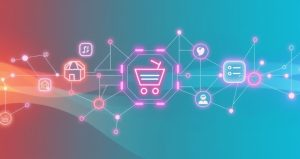Running a successful Etsy shop requires managing numerous tasks, from product creation and listing management to marketing and customer service. As your business grows, these responsibilities can become overwhelming. This is where Etsy integrations come into play, offering a powerful way to automate processes, save time, and scale your operations efficiently. By connecting your shop to specialized third-party applications, you can streamline workflows and focus on what truly matters: creating great products and growing your brand. This guide explores the essential Etsy integrations that can transform your business.
What Are Etsy Integrations?
Etsy integrations are software connections that allow your Etsy shop to communicate and share data with other platforms and applications. These connections are made possible through an Application Programming Interface (API), which acts as a bridge between different systems. Essentially, these tools can automatically pull order information from your shop or push product updates to it. The primary benefit of using Etsy integrations is the significant boost in efficiency, as they automate repetitive tasks that would otherwise consume valuable time and resources for any growing business.
Key Categories of Etsy Integrations
Choosing the right tools depends on your specific business needs, product type, and growth goals. Most Etsy integrations fall into several key categories, each designed to solve a different challenge for sellers. By understanding these categories, you can identify the areas where automation will have the most significant impact on your daily operations. From production and fulfillment to marketing and finance, there is likely an integration available to help you work smarter and more effectively. Let’s explore the most popular types of integrations.
1. Print-on-Demand (POD) Services
For sellers of custom apparel, home decor, and accessories, print-on-demand Etsy integrations are revolutionary. Services like Printful or Printify connect directly to your shop, automating the entire fulfillment process. When a customer places an order for a POD item in your store, the details are automatically sent to your production partner. They then print, pack, and ship the product directly to your customer under your brand. This model eliminates the need to hold physical inventory, reducing financial risk and operational complexity for sellers.
2. Multi-Channel E-commerce Platforms
While Etsy is a fantastic marketplace, many sellers expand their reach by selling on other platforms, such as their own website built with Shopify, Wix, or Squarespace. Multi-channel Etsy integrations synchronize your business across these different storefronts. These tools ensure that inventory levels, product details, and order information are consistent everywhere you sell. This prevents overselling and creates a seamless management experience, allowing you to control your entire e-commerce presence from a single, centralized dashboard, which is vital for scaling.
3. Marketing and Social Media Tools
Promoting your products is crucial for driving traffic and sales. Marketing-focused Etsy integrations help automate your promotional efforts across various channels. These tools can connect your shop to email marketing services like Mailchimp or social media scheduling platforms. For example, you can automatically share new listings on Pinterest or create targeted email campaigns for past customers. By automating these marketing tasks, you can maintain a consistent online presence and engage with your audience without spending hours on manual updates and posts each week.
4. Accounting and Financial Software
Bookkeeping is a critical but often tedious part of running a business. Accounting-focused Etsy integrations simplify financial management by automatically importing your sales and expense data into software like QuickBooks, Xero, or Wave. These tools correctly categorize transactions, calculate Etsy fees, and track sales tax, providing a clear and accurate overview of your business’s financial health. This automation not only saves countless hours during tax season but also empowers you to make smarter, data-driven decisions about pricing, expenses, and profitability.
5. Shipping and Fulfillment Solutions
For sellers who manage their own inventory and shipping, fulfillment integrations are indispensable. Platforms such as ShipStation, Pirate Ship, or Shippo connect to your Etsy shop to streamline the entire shipping process. These tools import order details, allowing you to purchase and print shipping labels in bulk, often at discounted rates. They also automatically update Etsy with tracking information and send shipping notifications to your customers. This level of automation significantly reduces the time spent on packing and shipping orders, a key benefit for high-volume shops.
Choosing the Right Etsy Integrations for Your Business
With so many options available, selecting the right Etsy integrations can seem daunting. The key is to start by identifying the most significant bottlenecks in your current workflow. Are you spending too much time on shipping? Is inventory management becoming a problem? Once you pinpoint your primary challenges, you can search for a tool designed to solve that specific issue. It is also important to consider your budget, as many integrations operate on a monthly subscription model. Always prioritize tools that offer a clear return on investment through time saved or increased sales.
Before committing to any service, take the time to read reviews from other Etsy sellers and, if possible, take advantage of free trials. A free trial period allows you to test the software’s functionality and ensure it is a good fit for your business without any financial risk. Pay close attention to the user interface and the quality of customer support provided. A powerful tool is only useful if it is easy to use and has reliable help available when you need it, making the selection process a critical step for your business success with Etsy integrations.
Conclusion: Streamlining for Sustainable Growth
Ultimately, Etsy integrations are more than just convenient tools; they are strategic assets that enable sustainable business growth. By automating key operational, marketing, and financial tasks, you can free up your time and mental energy to focus on higher-value activities. This includes developing new products, refining your brand identity, and providing exceptional customer service. Embracing the right set of Etsy integrations allows you to build a more efficient, scalable, and resilient business capable of thriving in the competitive online marketplace for years to come.






